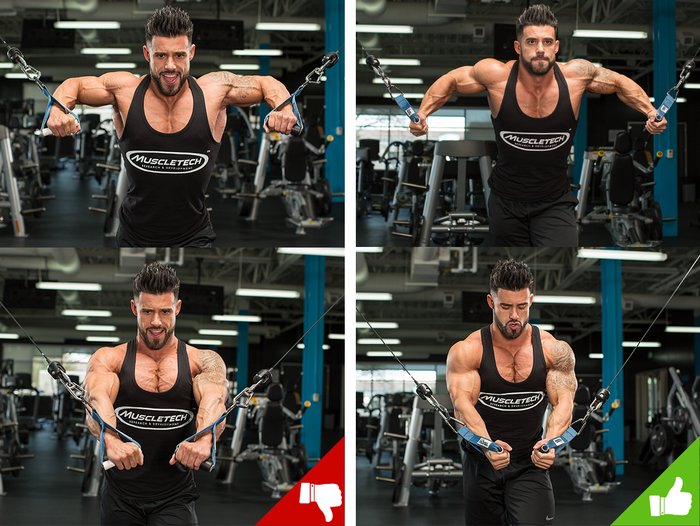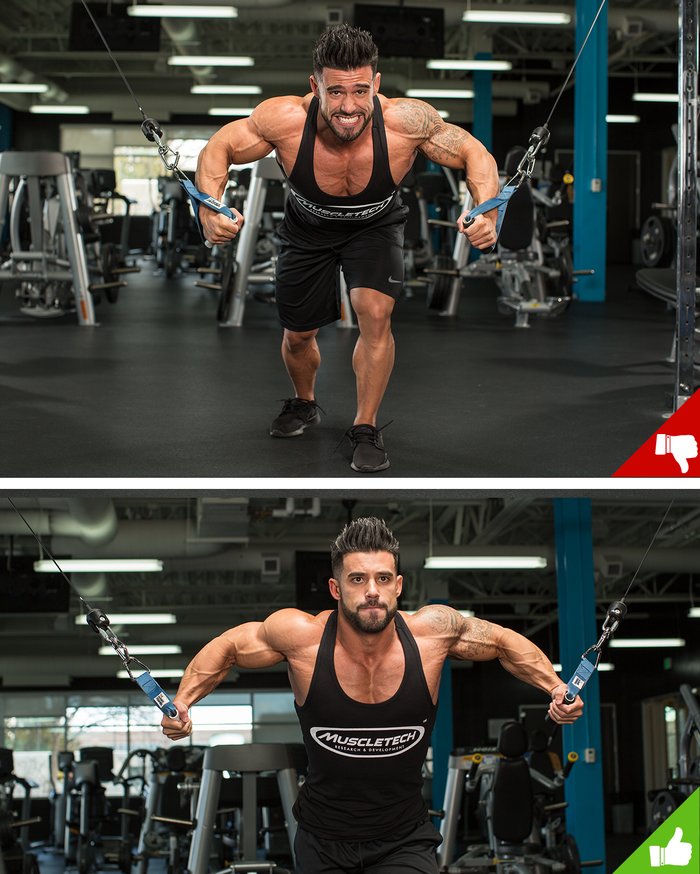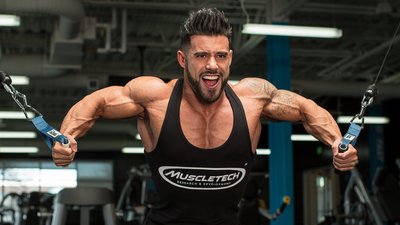When it's time for chest day, nothing beats the pulsing pump you generate with an onslaught of presses. Nothing, that is, until you add in cable cross-overs and can see it all happen right in the mirror: veins popping out all the way down into your arms, pecs ready to burst through your skin.
Bench presses are great, but cable cross-overs feel good and make you look even better! Unfortunately, there are several common blunders that may keep you from getting the full benefits of this great exercise.
Blunder 1: Pressing Handles Instead of Hugging Trees
When you do single-joint chest movements like flyes and cross-overs the correct way, you lock a very slight bend in your elbows, then maintain that position from the bottom to the top of the rep.
If you watch carefully, you'll notice that a lot of people initiate a cable crossover as they would a press, with their hands close to their shoulders. That's a blunder because a press recruits the triceps (elbow extension), when what you want to do is isolate your pecs.

You should begin a cable crossover with your arms extended and out wide, but with that very slight bend at the elbows. As you raise the weights and bring your hands forward and together, your hands should follow an arced path instead of a straight line (a motion some trainers compare to hugging a big tree).
Watch yourself in the mirror or have someone watch your form to make sure you've got this movement down.

Blunder 2: Failing to use a Split Stance
It may seem odd that your stance could affect how you do a chest exercise, but because of the way your center of gravity shifts as you move through the cable crossover's range of motion, stance matters a lot.
If you use a side-by-side foot stance for this movement, it can be really hard to maintain balance as you move your arms forward. A split stance, with your knees unlocked, can help you adapt to your changing center of gravity—and generate the force you need to complete the entire ROM. To create even more stability, especially to initiate the movement, turn your rear foot a bit more sideways to create a solid platform.

Blunder 3: Extending the Shoulder Joint too Much
Not unlike what can happen with dumbbell flyes, the cable handles can tend to pull your hands backward and extend your arms beyond what’s comfortable for your shoulder joint. If you haven't built up strength along this portion of the range of motion in the shoulder, it can put unwanted stress on these areas.
To remedy this, slow down the motion as you near full extension. Don't let the weights pull your arms so far back that you lose the control you'll need to switch directions.

Blunder 4: Standing Off-center Between the Cable Stacks
When you're working out, what you do on your left side should mirror what you do on your right. Believe it or not, being off-center by more than a few inches between the cables can throw off your symmetry.
When you're off-center, your position relative to the pulleys changes. This means that each pulley works your chest muscles from slightly different angles. That, over time, could affect not only symmetry but also your ability to maintain balance.
If you want to use different angles in your cross-overs, consider raising or lowering both pulleys. You can also change the point in front of you where you bring the handles together. This new point can be high, low, or in-between—as long as it's the same distance from the two pulley stations.

Blunder 5: Limiting Your Forward Range of Motion
If you want to slightly extend the range of motion on a cable crossover, let your hands meet and then cross over each other. This puts even more stimulus on the inner pec region to give you a better workout. But you have to do it in a very controlled way.
Control is important because you have to manage the slight asymmetry you've introduced into the movement. You also need to be alternating which hand crosses on top of the other, and there's no way you can maintain that kind of control if you’re not thinking about what you’re doing.
Even if you don't cross your hands, take them to the point where they almost touch each other. Stopping too short, which can happen if you use too much weight, limits the benefit you can get from the exercise.

Blunder 6: Going too Heavy on Sets
The cable crossover is a single-joint movement, typically done after sets of heavy chest presses. Because you're working a single joint, you can't use anywhere near the load you can with multi-joint movements. Nor should you try to because of the stress that extra weight puts on your elbow joints.

Generally speaking, when you're doing single-joint exercises you should use loads you can handle with good form for at least eight reps. This strategy allows you to isolate the pecs without the added pressure on your joints. And, as you approach the end of your training session, it also allows you to change your focus to generating a strong muscle pump and getting those veins popping!

